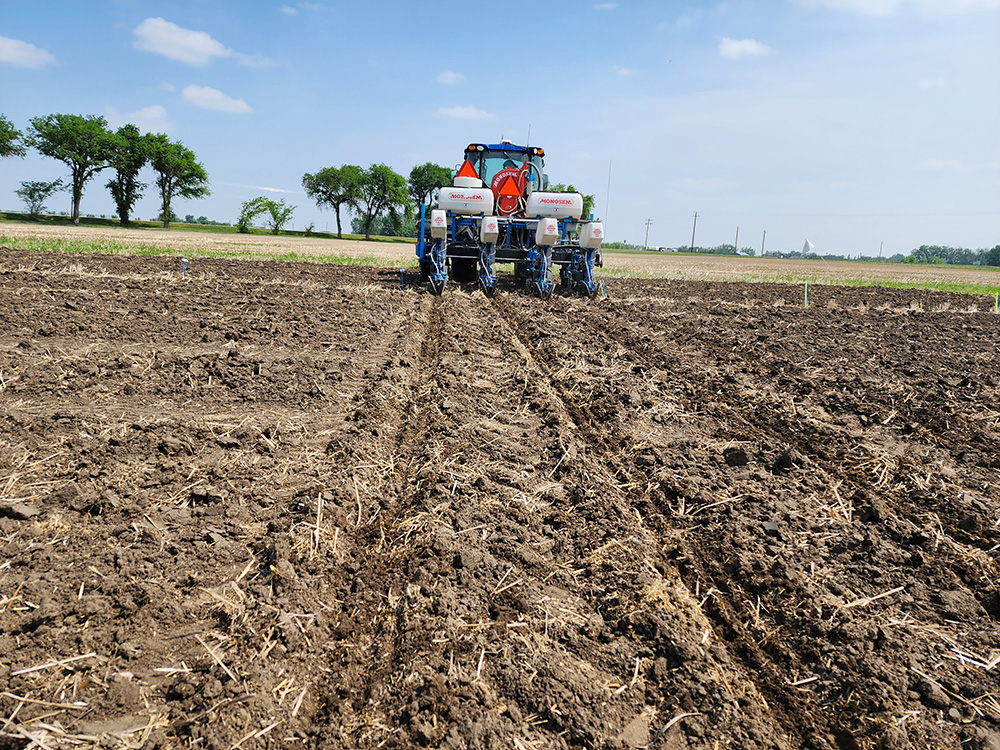Exploring enhanced efficiency nitrogen fertilizers (EENFs)
To keep operating costs low, producers look for opportunities to reduce input costs without reducing crop output. Currently, federal policy targets reduced fertilizer emissions to lighten the impact on our environment. Fortunately, producers can take out two birds with one stone by revisiting fertilizer habits.
Enhanced efficiency nitrogen fertilizers (EENFs) aid in preventing nitrogen losses during urea hydrolysis either by preventing ammonium volatilization (Urease inhibitors), nitrates from being converted to nitrous oxide (nitrification inhibitor or both (double inhibitors). Some of these products contain fertilizer additives, physical barriers around the fertilizer, or a different chemical formulation. Regardless of their composition, these products are all designed for the same purpose. Producers have been applying these inhibitors but research shows that yield increases have not been significant and the products still need unbiased third-party research.
Typically, nitrogen use efficiency for crops in Alberta is between 40-60%, depending on the crop and season. Currently, there is research being done around the world to see the global effectiveness of EENFs on a variety of crops in different environments. This year, Farming Smarter has put forward a proposal to research the effectiveness of inhibitor rates within the Prairies with a handful of our research partners.
University of Alberta’s Dr. Linda Gorim will join Farming Smarter July 13 to discuss the opportunity EENFs provides producers. Dr. Gorim studies cropping systems and integrated agronomy. Recently She ventured into products and crops to optimize nutrient efficiency within fields. Her focus is the optimization of ag production systems and agricultural sustainability.
“In the Prairies, a recent study by AAFC’s Dr. Brian Beres and Adam Fast (student) indicated that the application of double inhibitor SuperU in wheat resulted 3.3% yield increase. The other tested inhibitors showed no effects. This result was consistent with reports from other parts of the world,” Gorim states.
EENFs may not increase yields, but they can offer benefits. Producer adoption of these products may increase if they can offset additional costs by either reduction of recommended rates or government subsidies.
|
|
|
Image Caption: Linda Gorim (second from left) and her class at Shorty Fensky’s farm near Thorsby. Giving students the chance to get their hands dirty provides learning that a classroom alone simply can’t provide, says the assistant professor from the University of Alberta. Photo: supplied by Alexis Kienlen, Alberta Farmer Express |
Insight on Inhibitors
Currently, EENFs fall into three categories, nitrification inhibitors, urease inhibitors, and slow-release double inhibitors. While every EEF increases the efficacy of fertilizers, each does so through different means. What you hope to get out of these products will determine which product you need.
Nitrification inhibitors suppress the effectiveness of microbes in the soil known as nitrifiers that slow the process of nitrification. This lengthens the time the plant has access to the fertilizer capturing critical growth stages. Additionally, it aids in reducing soil nitrogen losses from volatilization, denitrification, leaching and immobilization.
Urease inhibitors have a coating around the urea that requires water to erode. This coating delays the hydrolyzation process of the urea allowing for a controlled release. There are two primary forms of urease inhibitors: N-(n-butyl) thiophosphoric triamide (NBPT) and ammonium thiosulfate (ATS). The first breaks down over a period of days to weeks depending on the product. Meanwhile, ATS operates on a more short-term basis. An additional benefit of these inhibitors is the ability to protect from ammonia loss and even encourage rain or irrigation to move urea deeper into the soil.
Slow-release double inhibitor products are either coated products or chemical formulations. Like urease inhibitors, coatings slow down the dissolution of the fertilizer with a physical cover. Chemical formulations have different elements that slow down the conversion of the nitrogen. The coatings in these products are typically made with sulfur or polymer. The former breaks down to allow water into the granule to dissolve the urea. The latter allows for a more controlled release of fertilizer as they can come with a variety of thicknesses. Polymer-coated urea is the most common type of P-related products and may extend the availability of phosphorus into subsequent years.
However, producers should not treat EENFs as a standalone strategy! Growers should explore additional practices like strategically planning crop rotation, integrating cover crops etc. in addition to using nitrification inhibitors to improve farm revenues. Including legumes in crop rotations provides the subsequent crop with nitrate, a natural slow-release fertilizer. Not only will it reduce your input costs, but you’ll be able to see profitable returns from the legumes. Additionally, cover crops can be an excellent strategy for reducing the lost nitrogen in your field.
“A recent study from Wageningen University, the Netherlands shows shoulder cover crops capture nitrates post harvest and release it for the following spring crops.,” says Dr. Gorim.
Future proofing the Fields
As with anything, it’s important to select the right tool for the job. It’s the same case for selecting the right EENF for your field. Dr. Gorim says regional data is paramount and requires more research to provide growers with the assurance they deserve. It’s up to researchers and extension specialists to summarize this knowledge and get it in the hands of growers.
“Several people are doing this work; micro-climates and crop varieties can mean results aren’t the same from region to region,” she says.
The decision of which EEF to use will depend on your soil’s nutrient content and the region’s weather patterns. Dr. Gorim says weather is everything when it comes to influencing nitrogen efficiency, especially with EENFs. For instance, rainfed systems aiming to reduce nitrogen losses find urease inhibitors typically best. However, a sudden heavy rain that waterlogs the field may result in huge losses via leaching and nitrous oxide.
For producers looking to adopt EENFs, but uncertain about the options double inhibitors could be the best choice. However, if the data is available for your region, it’s best to discuss options with an agronomist or your local crop commissions office.
If you want to learn more about EENFs and the importance of research into these products, register for Farming Smarter’s July 13 Plot Hop! Dr. Gorim will discuss EENFs, how they can improve your operations, and how to find the best option for you. We hope to see you there!
|
|
|
Image Caption: Fertilizer is a huge cost to producers, and the risk of nitrogen loss could compound problems in the field. |





